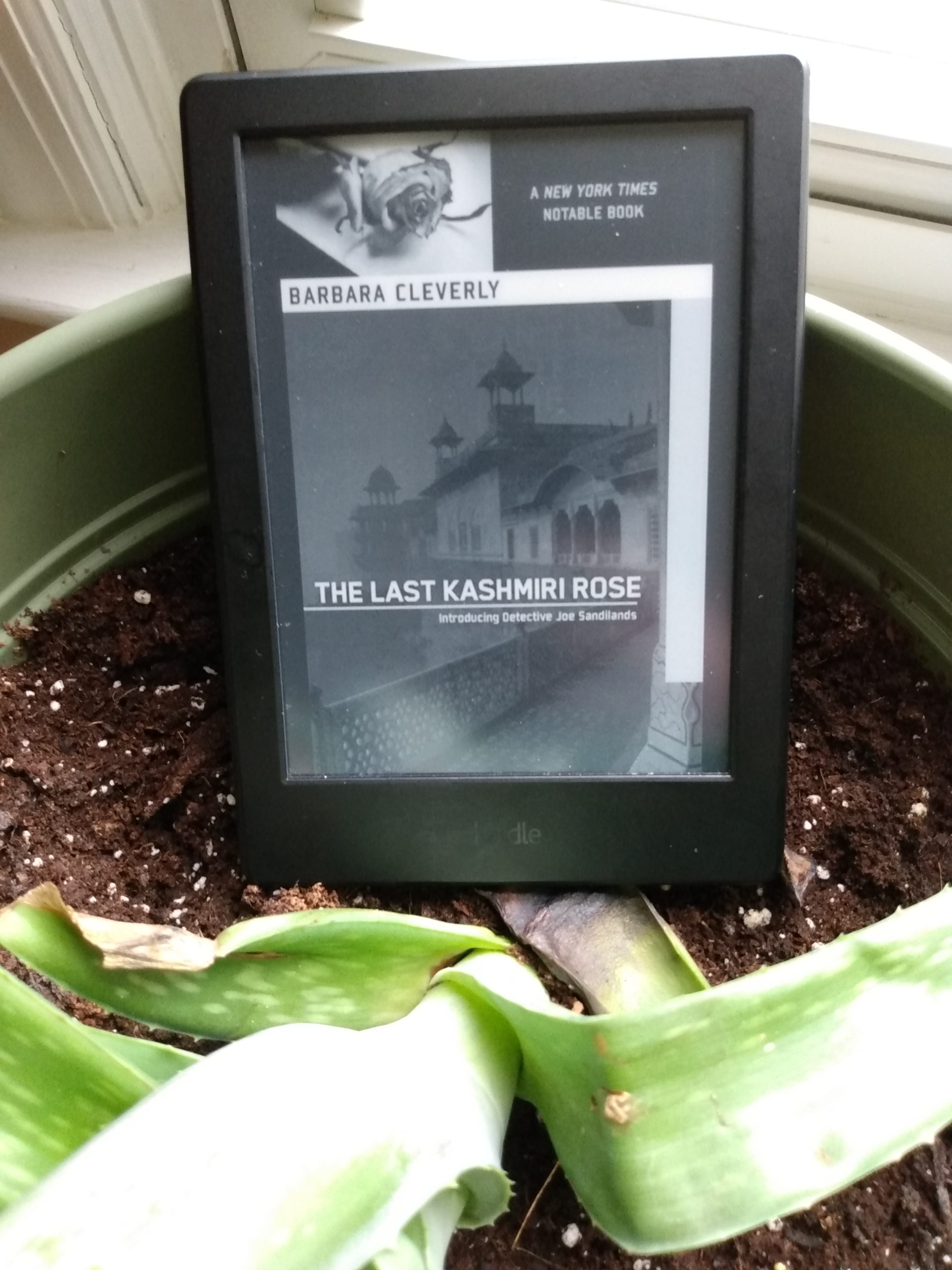I really like Barbara Cleverly’s writing; I’ve read her Laetitia Talbot series (starring a chipper, female archaeologist in the late 1920’s) and was disappointed only in the fact that it was three books long! I decided to try her Commander Joe Sandilands series, because if I couldn’t have more Laetitia, I could at least have more Cleverly. My approval of the first book in this series, The Last Kashmiri Rose, should be evident from this review.
Commander Joe Sandilands is at the end of his six-month assignment in India, and looking forward to returning to the foggy banks of the Thames in London. However, he’s summoned by the Lieutenant governor and his attractive niece, Nancy, to look into her friend’s mysterious death. Nancy paves his way into her society where he can ask the necessary questions to get to the bottom of not only her friend’s death, but four more that have occurred over the years. Not only the mystery deepens, as Sandilands finds himself enjoying Nancy’s company more than he ought to be. With the help of a dedicated and underappreciated police sergeant, Nancy’s husband, and his own critical thinking skills, Sandilands brings this mystery to an exciting close.
There are many things that I like about Barbara Cleverly’s writing, the first being her settings. Her Laetitia Talbot series is set in Greece, Crete, and France, and Sandilands in the exotic locale of India. Cleverly is great at describing the scenery of her locations, and I, like Sandilands, was more appreciative of it by the end. Although this book takes place in India, it still takes place in British India, where Cleverly portrays (by design, I’m sure) the idiosyncrasies of maintaining a British lifestyle in India. Gardens, polo, teatime, furnishing styles, etc. are all aspects of the setting that jump out to the reader as strange customs in such a foreign environment.
Another aspect of Cleverly’s writing that I enjoy is the way she doesn’t say everything that she could. There are a few comments, theories, etc. that are left up to the reader to infer, and I really appreciate that because then the reader is a character, following their train of thought. It can be an aggravating style of writing if the author is ambiguous with it but, luckily, Cleverly is far from it. She constructs her writing in such a way that she leads the reader exactly where she intends without being overly explicit. I feel as though I’m being recognized as an intelligent audience when authors do this and I admire the technique.
I thought the plot and layout of this story was really well done; the first 50%-60% is spent talking to witnesses, gathering evidence, learning more about Sandilands, and feeling out the circumstances of the deaths. After 60%-70%, Sandilands starts to concentrate on his suspects, and he and readers have a really good guess as to the perpetrator(s), followed by the denouement of the novel. I really liked how the plot was laid out, especially with all of the background information. It wasn’t very dramatic; there aren’t any wild chase scenes or people being followed, just good old thorough investigating, which I’ve found pretty typical of Cleverly. However, I was still thoroughly engaged due to the sinister plot, the dynamic between Sandilands and Nancy, the beautiful Indian scenery, and the desire to see these deaths avenged.
I will certainly be reading the second novel and I am intrigued to see how Sandilands grows throughout this series.
